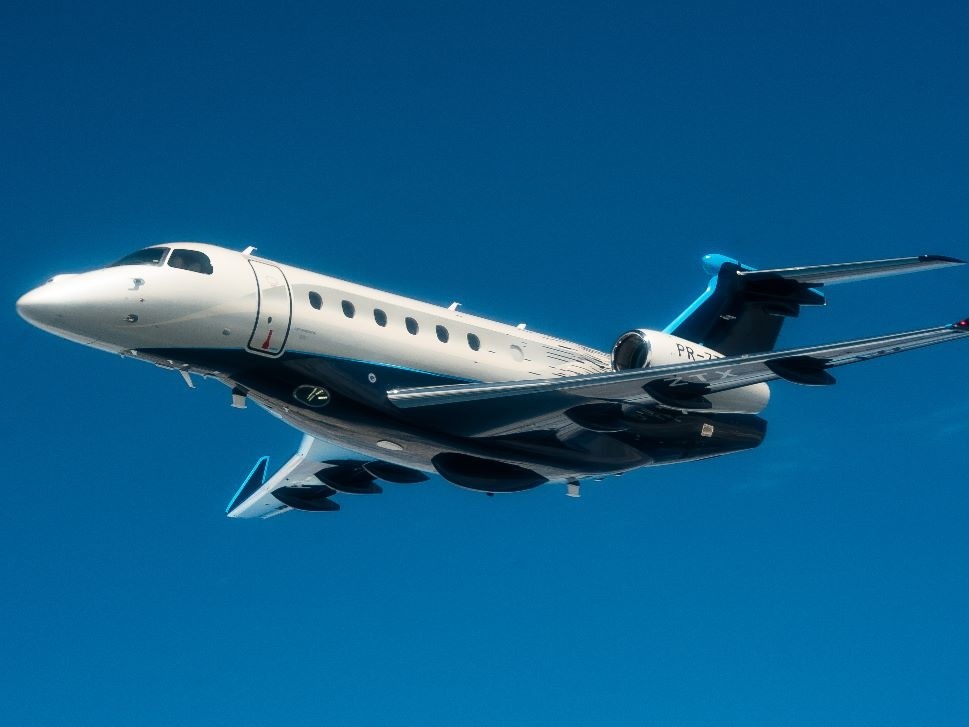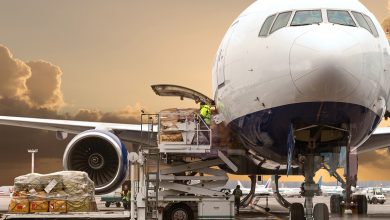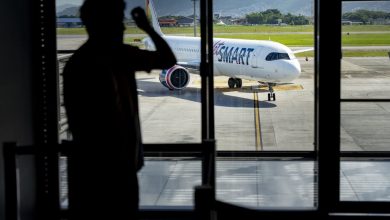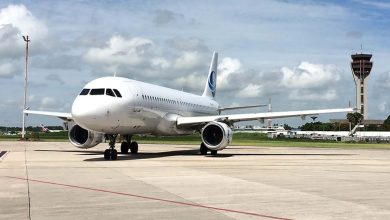Visão geral do mercado de aviação executiva – novembro de 2018

À medida que o fim do ano se aproxima, e com o NBAA-BACE no espelho retrovisor Rolland Vincent, Editor, Market Indicators, avalia as principais questões no horizonte para o mercado de Business Aviation… O que tem acontecido em todo o setor?
Leia na íntegra:
As Year-End approaches, and with NBAA-BACE in the rear-view mirror Rolland Vincent, Editor, Market Indicators, assesses the key issues on the horizon for the Business Aviation marketplace…What’s been happening around the industry?
As Year-End approaches, and with NBAA-BACE in the rear-view mirror, Rolland Vincent, Editor, Market Indicators, assesses the key issues on the horizon for the Business Aviation marketplace…
Fresh off another crazy-busy NBAA-BACE (and no, I am still not yet comfortable with calling it BACE), Business Aviation industry professionals are knee-deep in year-end paperwork and the mad dash to the December 31 deadline to get transactions recorded before the little window closes at the FAA Aircraft Registry Office in Oklahoma City.
Although we should all be thankful for the early October 2018 law that reauthorizes the US Federal Aviation Administration (FAA) for five years, we might ask ourselves what happened on the way to where we are today…
With countless “riders” and almost never-to-be-read provisions that filled 1,186 pages of legalese, the ATSDRRR was born.
An acronym that was surely meant to appeal to the aviation aficionado in every corner of this industry, the Aviation, Transportation Safety, and Disaster Recovery Reforms and Reauthorization Act (or simply H.R. 302) includes a bevy of provisions that few (if any) legislators had the time or inclination to read before voting to support it.
Some of the good news almost lost in the mounds of paper are important provisions authorizing the FAA to certify new civil supersonic aircraft with low sonic boom signatures, and protections to keep the lights turned on, the employees well fed and paid, and – most importantly – the now-famous window open at the FAA Aircraft Registry Office in OKC.
Now, at long last, aircraft transactions specialists, their legal and aircraft title teams, and associated professionals can sleep easy, knowing that their paperwork is getting processed.
OEMs Stepping-Up
The manufacturers that design, build, sell and support business aircraft anchored every corner of the vast Orange County Convention Center and aircraft static display in Orlando last month, with no shortage of enthusiasm, investment and announcements.
True to form, Embraer took the wrapping off some important improvements to its clean-sheet mid-size and super midsize offerings, adding additional range and cabin accoutrements that provide even more value for the dollar – or is that reais – than customers have already come to expect from the company.
Bombardier touted the newly-certified Global 7500 and brethren Global 6500 and 5500 as the crown jewels of an organization that has clearly been busy doing its homework and is once again running in the industry fast-lane.
Pilatus continues to ramp-up production rates on its popular PC-24 twin jet, with an order book that looks solid for years to come.
A Cold War for Talent…
With all of the enthusiasm and optimism in evidence during NBAA-BACE, signs and sounds of rumblings in the sky were not too hard to discern. The shortage of young talent – pilots, aircraft maintenance technicians, and other aviation professionals, is no longer a topic for theoretical debate.
Call it a Cold War for talent, but there is no doubt that organizations across the industry are dealing with pressures to increase wages and benefits just to retain the people they already have.
With Airbus and Boeing locked in a duopolistic battle that will soon spin off four new narrow-body jets a day into the worldwide market, business aircraft owners and operators should know that they will need to be wise, creative, and generous if they want to keep their people employed for long.
With the looming mid-term US federal elections, jittery stock markets, Brexit backflips, and the now all-too-common trade barbs between countries where previously there were few, the news headlines of the day continue to distract business leaders’ attention away from investing in their businesses and people.
Money is still cheap, the markets are still strong, life is still short, and opportunities never, ever wait around for long. For those leaders with access to a business aircraft, the times are good to seize the opportunities, before somebody else does.
In November 2018, what time is it? It’s time to buy an airplane. Time to call the Flight Department. Time to get the pre-flight checks underway. It’s time to build a legacy…
Flight Activity – North America
TRAQPak’s review of Year over Year (YoY) flight activity (September 2018 vs. September 2017) indicates a decrease of 5.2%. Month-over-Month, September 2018 was also down versus August 2018…
YoY, the results by operational category were mixed with Fractional activity providing the only yearly increase. Part 135 activity posted a sizable drop, while the aircraft categories were all negative with Light jets posting the largest decline from 2017.
Month over Month
September Business Aviation flight activity was down markedly from August. Results by operational category were all negative for the month, with the Part 135 segment posting the largest monthly decrease. Aircraft categories were all negative, too.
October Forecast
TRAQPak analysts estimate there will be a 2.2% increase in overall flight activity YoY in October 2018.
Flight Activity – Europe
WingX reported 83,848 Business Aviation departures in Europe during September, representing a 4% growth YoY, slightly ahead of the YTD trend.
Overall, 63% of September’s activity was jet-operated, which is a 3% increase YoY, and over the last twelve months, the strongest trend is in the Medium jet category.
The UK and Switzerland experienced slight declines in departures in September, although both have YTD trends of around +3%. France and Germany enjoyed solid growth of ~5%, though the strongest growth among the larger markets came from Italy and Spain at 7% and 9% respectively.
Some of the smaller markets also experienced strong growth in September, with Business Aviation activity up by 10% in The Netherlands and Ireland; 22% in Croatia; and 60% out of Finland (mainly Turboprop and Piston). Flights out of Turkey, however, slumped -15%.
Flights operated within Europe were up 4% in September, and flights to North America bounced back with a 5% YoY increase (against a 1% YTD decline). Flights to the Middle East dropped off -20% and trail -11% YTD, while flights to Africa are trending up by 8% YTD.
Charter Activity
Charter/AOC activity was found to be up 2% YoY, somewhat weaker than recent trends, with UK charters declining 6% YoY.
France and Germany were the busiest Charter/AOC markets, trending at around +3.5%, while Spain, Italy and Netherlands had the strongest growth in Charter/AOC.
“This month saw European Business Aviation trends return to strong growth,” Richard Koe, managing director of WingX Advance concluded. “There was a distinctive pattern to the activity, with relatively strong growth in Private flights, whilst Charter flights are tailing off after the summer.”
Jetcraft: Next Ten Years to Outpace Previous Decade
Jetcraft released its fourth annual Ten-Year Business Aviation Market Forecast, which reaffirms steady growth in the private jet industry is set to continue…
The forecast predicts 8,736 unit deliveries over the next 10 years, representing $271bn in revenues (based on 2018 pricing). North America will account for 60% (5,241) of predicted new unit deliveries over the forecast period, with Europe accounting for 18% (1,572), and Asia-Pacific 13% (1,136).
“2018 has been a real turning point for Business Aviation, as we have now successfully navigated through our industry’s most difficult period,” Jahid Fazal-Karim, owner and chairman of the board, Jetcraft, notes. “This year’s forecast predicts the continuation of our current business cycle of steady and healthy growth, driven by an increase in wealth creation and the demand for larger and more expensive aircraft.”
Growing Exposure to BizAv
The increase in wealth creation over the past decade has spurred growth in family offices that are now offering a wide variety of specialized services, including Business Aviation. Together with the increase in block charter and fractional programs, this is exposing more UHNWIs to the industry than ever before.
However, despite continued economic growth, Fortune 500 companies have yet to return to historical aircraft transaction levels, due to maintaining a focus on other financial priorities, such as share buybacks and paying down debt. This customer segment is unlikely to restart aircraft purchasing programs until well into the cycle.
Large Jets to Lead the Way
The forecast predicts that the Large jet category (comprising Super-Large, Ultra-Long-Range and converted airline segments) will constitute 32% of total units (2,778) and 64% of total revenue over the next decade. All new aircraft model programs, both announced and projected, during the forecast period are exclusively widebodies.
“Predicted unit deliveries in the Large jet category account for a huge proportion of total revenues in the industry, demonstrating the trend towards larger, long-range aircraft to support today’s global business needs,” Fazal-Karim adds.
While the industry is set to embark on a period of substantial growth, its resilience during the challenges of the previous business cycle has prepared it well for expansion. “We’re confident that the lessons we’ve learned over the past decade will ensure sustainable growth for Business Aviation in the years to come. Ours is an enduring industry, and one with a buoyant future ahead,” Fazal-Karim concludes.
The Most Competitive Aerospace Business Environments…
The states of Washington, Ohio, North Carolina, Kansas and Colorado offer the most competitive business environments for the manufacture of aerospace equipment, notes Teal Group…
Washington, in particular, scored extremely well across all categories and was a top ten finisher in all but one, ranking first in Economy and Industry, while finishing second in Labor & Education and Costs. It ranked fifth in Risk to Operations, Research & Innovation and Taxes & Incentives. Infrastructure was the only category where Washington fell outside the top ten.
Ohio had the second highest overall rank, with significant separation between it and the state of Washington. In fact, Ohio finished in the top ten in only two categories (Labor & Education and Industry). It did finish in the second ten in a number of categories, however, thereby reinforcing its overall strong showing.
North Carolina finished first in the most important and highest-weighted category, Costs, and had very strong rankings with two other top ten finishes in Taxes & Incentives and Industry. Kansas, by comparison found top ten category rankings for Industry, Labor & Education and Costs. Kansas was a poor performer in Risk to Operations, coming in at number fifty.
Fifth-placed Colorado was particularly strong in Research & Innovation, Labor & Education and Taxes & Incentives, having top ten finishes in these three categories, but did not score well in the important Costs category. The remaining top ten is rounded out by Georgia, Utah, Texas, Arizona and Alabama.
Has Pilot Shortage Hit Used Aircraft Market?
The growing, worldwide pilot shortage is affecting virtually every segment of the aviation industry, and reports coming from the UK suggest the used aircraft market is feeling the squeeze, according to Colibri Aircraft…
Colibri Aircraft recently noted a huge shortage of pilots in the European private jet sector is resulting in owners increasingly not being able to use their aircraft when they need to. According to Colibri managing director Oliver Stone, this problem will get worse as airlines are retiring current pilots and recruiting from the private jet sector while growing markets in Asia, the Middle East and elsewhere are attracting more European pilots.
According to Colibri Aircraft, seven in 10 sales it works on encounters difficulties in being able to guarantee sufficient access to a pilot or crew. Five years ago, only around 20% of cases the company worked on were affected by this problem.
“Europe needs around 95,000 new commercial pilots by 2034, and many airlines are looking to the Business Aviation sector to help fill this gap, leaving fewer pilots available to fly private aircraft,” Stone explains. “The pilot shortfall is a combination of several factors including the legal retirement age for pilots being set at 65, and growing demand for pilots from overseas markets – especially Asia and the Middle East.
“We are increasingly having to research in the early stages of an acquisition as to how clients plan to crew their aircraft. If they decide to only hire one full-time pilot and rely on contract crew, they increasingly run the risk of not having crew available when they want to fly.”
Colibri Aircraft believes the easiest solution for an owner is to pay a higher monthly cost to have three full-time pilots available when they want to fly. Another option is to consider an operator who already has crew on their certificate that they can use.
Private Jets ‘Will be Affordable for Millions’
New research amongst Business Aviation professionals suggests advances in technology will make private jet flying much cheaper and easier. The research, commissioned by Revolution.Aero predicts millions more people will start using business aircraft for the first time…
The average typical private jet customer is over 50, the research notes, but 71% of those interviewed believe by 2023 it will be below this, with 59% believing it will be between 40 and 50. A further 11% think it will be below 40, while only one in five predict the average age will remain at over 50.
Just over two-thirds of those Business Aviation professionals polled (67%) believe advances in technology and apps will make it easier to book individual seats on private jets, and over half (51%) also think these developments will make it easier to charter out private jet ‘dead legs’. As many as one-in-four private aircraft flying at any one time today have no passengers on board, and only 12% of those interviewed predict that the number of dead-leg flights being chartered out will fall.
“Ten years ago there were maybe five apps focusing on the Business Aviation sector, compared to more than 50 now,” Alasdair Whyte, co-founder, Revolution.Aero notes. “Some 84% of Business Aviation professionals expect there to be even more private jet apps on the market by 2023, with one in three expecting significantly more.
“In this data and technology revolution, there is so much more that can be done to enable owners of business aircraft to make their assets more accessible to potential customers, further enhancing the income (or contribution to costs) they earn from them. This coupled with the greater flexibility in how business aircraft can be chartered will open up business jet travel for many more people.”
In-Service Aircraft Values and Maintenance Condition
Asset Insight’s market analysis on September 28, 2018 covering 93 fixed-wing models and 1,553 aircraft listed ‘For Sale’ revealed an additional 2.4% decrease to the tracked inventory fleet (39 units). Here are the details…
Tracked Large, Medium and Small jet inventories decreased 4.7%, 4.2% and 1.3%, respectively, while Turboprops listed ‘For Sale’ increased by 1.4%. Entering Q4 2018, sellers appear to be more focused on moving their aircraft, with Ask Price dropping 5% at the end of September.
By fleet average and individual group, values experienced the following changes:
- Large and Medium jet transactions were primarily centered on higher quality assets.
- Small jet trades appeared to be of mixed asset quality.
- Turboprop inventory improved, relative to asset quality, with lower-rated units trading and higher quality assets entering the inventory.
- The ‘For Sale’ changes resulted in Maintenance Exposure worsening for Large jets, remaining steady for Medium jets, and improving for Small jets and Turboprops.
Quality Rating
Asset Insight’s tracked fleet Quality Rating entered the ‘Excellent’ range, with the figure improving to 5.296 (a 12-month best), on a scale of –2.5 to 10 (see Table A). This reflects a reduction in both the number of upcoming scheduled maintenance events and their average cost.
Maintenance Exposure
With asset quality improving, average Maintenance Exposure (an aircraft’s accumulated/embedded maintenance expense) decreased (improved) 4.8% to $1.385m as the inventory fleet’s upcoming maintenance events are expected to be less expensive.
Maintenance Exposure to Ask Price (ETP) Ratio
The ETP Ratio (see Table B) is a useful indicator of an aircraft’s marketability, computed by dividing the asset’s Maintenance Exposure (the financial liability accrued with respect to future scheduled maintenance events) by its Ask Price.
‘Days on Market’ analysis has shown that when the ETP Ratio is greater than 40%, a listed aircraft’s time on the market increases, usually by more than 30% and, during Q3 2018, assets whose ETP Ratio was 40% or more were listed ‘For Sale’ nearly 34% longer (on average) than aircraft whose Ratio was below 40% (i.e. 280 versus 374 Days on Market).
The September analysis also revealed that 48.8% of all tracked models and 57.6% of Asset Insight’s fleet posted an ETP Ratio above 40%.
The tracked fleet’s ETP Ratio recorded a substantial decrease (improvement) in September, following five consecutive monthly increases. It registered 67.1% (versus August’s record-worst 72.3%).
- Turboprops accounted for the lowest (best) ETP Ratio at 50.1%;
- Large jets followed at 64.2% (the group’s record-worst Ratio);
- Small jets came in at 68.3% (reflecting a nearly 19% improvement over last month, along with the group’s best 12-month figure); and
- Medium jets improved slightly to 78%.
Asset Insight September Market Summary
Inventory aircraft quality registered a 1.3% improvement during September, and 1.9% during Q3. This may not sound like much, but when one considers the overall Ask Price reduction, the market is primed for an excellent Q4.
However, not all models fared as well, and buyers not conducting detailed analytics before making an offer are liable to ‘pay the price’. Sellers must equally learn how their aircraft compares with assets listed ‘For Sale’ that, in some cases, will include different make/model aircraft than the one they’re selling.
Large Jets
Inventory decreased by 16 units, lowering asset quality and increasing Maintenance Exposure 4.9% as higher quality aircraft transacted. At 5.392, the group maintained its ‘Excellent’ Quality Rating, even though Maintenance Exposure hit a 12-month high (worst) figure and boosted the ETP Ratio to a record-high (worst) 64.2%.
Based on the limited availability facing buyers, detailed analytics (and not patience) will be key for those seeking to close a deal before year-end.
Medium Jets
The tracked fleet’s inventory decreased by another 21 units with transactions slightly favoring higher quality aircraft. The group’s Quality Rating decreased 1.6%, safely within the ‘Very Good’ range, while Maintenance Exposure remained unchanged.
The Ask Price increased 2.2%, although September’s figure was just above August’s 12-month low. The ETP Ratio decreased slightly, but at 78% the figure will likely make it difficult for most sellers to obtain a reasonable offer for their aircraft.
Small Jets
Inventory dropped by six units in September, with transactions involving primarily lower quality aircraft. Quality Rating improved 3.8% to edge into the ‘Outstanding’ range, while Maintenance Exposure decreased (improved) a dramatic 15.8%, thereby setting the stage for an impressive 18.7% ETP Ratio improvement to 68.3%, the group’s best 12-month figure.
Small Jets currently offer some great values, assuming buyers do their homework, while numerous sellers should be poised to benefit from the currently stable Ask Prices.
Turboprops
Our tracked inventory fleet increased by another four units in September. Asset quality improved 6.8%, primarily due to transactions involving lower quality aircraft, and pushed the group into the ‘Very Good’ range. Maintenance Exposure posted an impressive 10.7% drop helping reduce the ETP Ratio to 50.1%, even though Ask Prices fell 1.1% to a 12-month low figure.
Locating assets offering good value should be straight-forward for buyers, while many sellers should be able to justify the price point for their asset.
Fonte: AvBuyer 01/11/2018.





